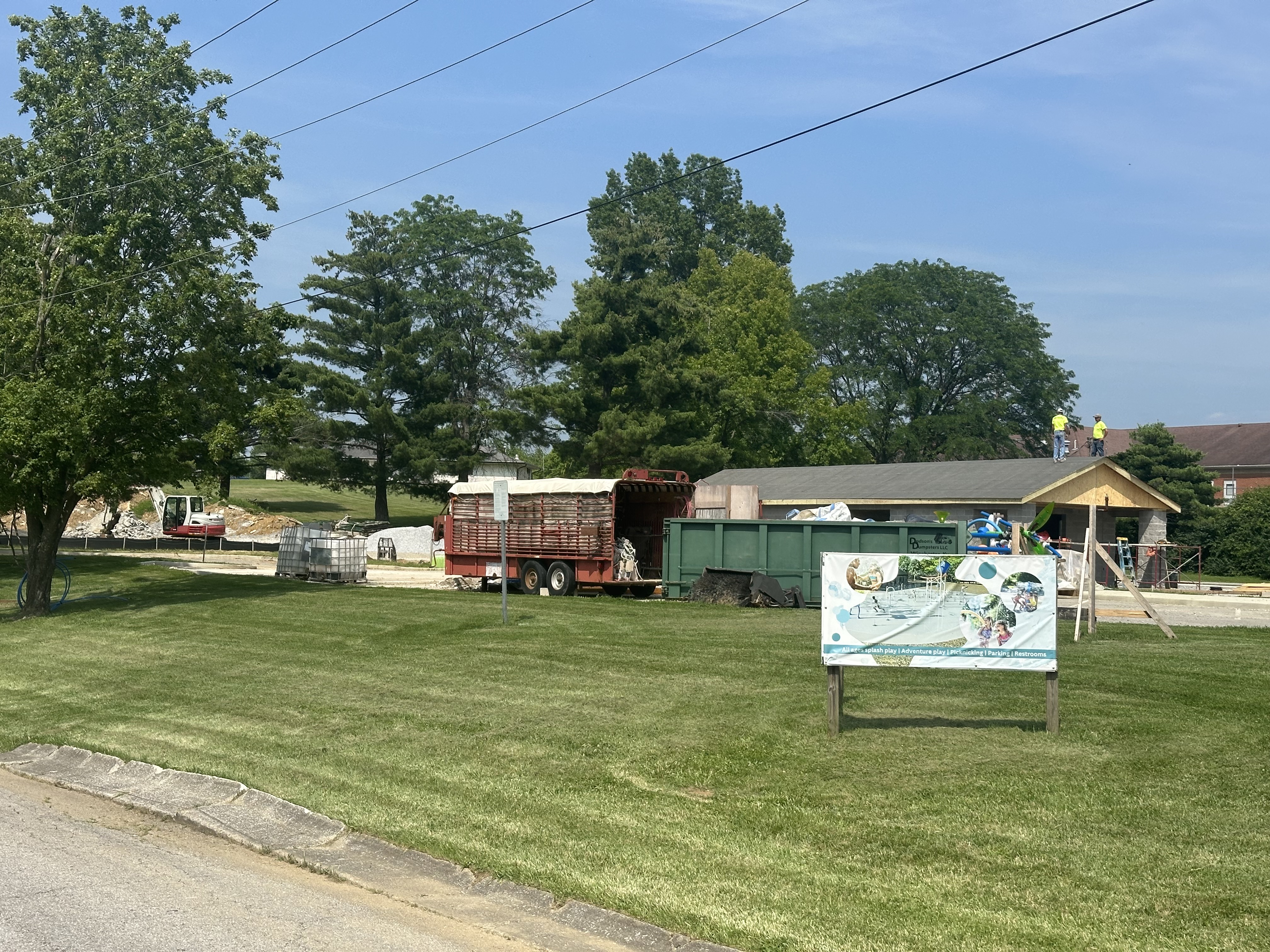Exploring Clark County’s Blue Water Trails
Published 11:56 am Friday, April 13, 2018

- Harry Enoch
This is the third in a series of columns adapted from a Blue Water Trails Guide composed by historian Harry Enoch for the Kentucky River Trail Alliance.
Otter Creek
After an ambush by Indians at Twitty’s Fort in 1775, Daniel Boone’s party of road cutters followed Otter Creek to its mouth on the Kentucky River. Col. Richard Henderson’s party followed a few days later and commenced building Fort Boonesborough a little downstream. Otter Creek was used for water power beginning in 1795 with erection of John Halley’s gristmill and later sawmill.
Chalybeate Springs
This mineral springs was a landmark during the 19th century but is lost today. It was reported to be in Clark County directly opposite the mouth of Otter Creek. Chalybeate waters containing salts of iron were once sought out for their health-restoring properties.
Civil War Fort at Boonesboro
After central Kentucky was hit with three major Confederate raids north of the Kentucky River in 1862 and 1863, plans were made to erect small defensive works at the most important crossing points: the fords and ferries south and east of Lexington. Fort Boonesboro was constructed as an earthwork, surrounded by an abatis and enclosing a blockhouse. There is a small park here with a hiking trail to the hilltop where there are remains of the fort. A series of murals depicting historic river scenes line the wall of the parking lot on Ford Road.
Winchester Municipal Utilities Water Intake
WMU supplies water for Winchester and most of Clark County. Raw water is piped to their treatment plant at the Winchester Reservoir. Winchester is the only municipality taking water from Pool 10.
Lock & Dam No. 10
This concrete dam was built by Mason and Hoge Company (later became Mason & Hanger) for the U.S. Army Corps of Engineers. When nearing completion in March 1905, the river froze then thawed, releasing a flood of ice and saw logs that washed out the west bank around the lock. This required construction of an auxiliary dam to close the gap on the Madison side. The Corps turned the lock and dam over to the state in 1996. The lock has been closed since 2000.
Pool 9
Pool 9 is formed by Lock and Dam No. 9 at Valley View. This 19-mile-long pool at one time was the busiest recreational area on the river. There were numerous launching points for boats, and the banks were lined with docks, as well as restaurants and taverns.
Kentucky River Museum
This addition to Fort Boonesborough State Park includes two restored lock keeper houses. The Museum explores the development of commerce on the river and tells the story of the Walters family who lived here and worked the lock through much of its history. Now open on a limited basis.
Boonesborough State Park
Here was the site of Boonesborough, Kentucky’s second permanent settlement in 1775. The need to honor this historic site came to fruition in 1963 when Fort Boonesborough State Park opened on 153 acres. The park has a swimming pool and a campground with showers, laundry and grocery. The adjacent public beach was a long time attraction for swimmers and boaters and was an important landing for steamboats, once a common sight on the Kentucky River.
In 1846, the Blue Wing took advantage of a rise in the river level to steam all the way to Irvine. From that time until about the turn of the century, numerous steamboats operated in the waters of Pool 9 and 10. A few of those identified so far are Favorite, Thealka, Greyhound, Blue Wing, Blue Wing II, Ocean, Gen. O. M. Poe, Billy Parsons, Longfellow, Dora, Ingomar, Kentucky, Daniel Boone, Gazette, John Armstrong, and Falls City.
Fort Boonesborough
The original fort was named for Daniel Boone who led a party of settlers here for the Transylvania Company. The original fort site is marked by a stone enclosure surrounding the DAR monument. In 1974, a replica of the historic fort was dedicated. The fort, located on higher ground to protect from flooding, was reconstructed complete with cabins, blockhouses and furnishings. First-person Daniel Boone interpretations along with 18th century life skills and period craft demonstrations give visitors a sense of what life was like for Kentucky pioneers.
Boonesborough Boat Ramp
The state park provides this free public access point for boaters.
Boonesborough Ferry
In 1779, Richard Callaway received permission to operate a ferry at Boonesborough, the first one chartered in Kentucky. The following year, while building a ferry boat, Callaway and Pemberton Rawlings and were killed by Indians and two slaves were carried off. His family sold the ferry rights to John Sidebottom. The ferry operated under a succession of owners until the highway bridge was built in 1931.
Barr’s Tanyard
James and Thomas Barr had a tanyard in Clark County at the ferry landing. In 1814, the brothers offered to “pay cash or leather for raw hides. Will tan hides for half.” The small stream here was first called “Ferry Branch” then “Tanyard Branch” and “Barr’s Branch.”
Harry Enoch, retired biochemist and history enthusiast, has been writing for the Sun since 2005.





